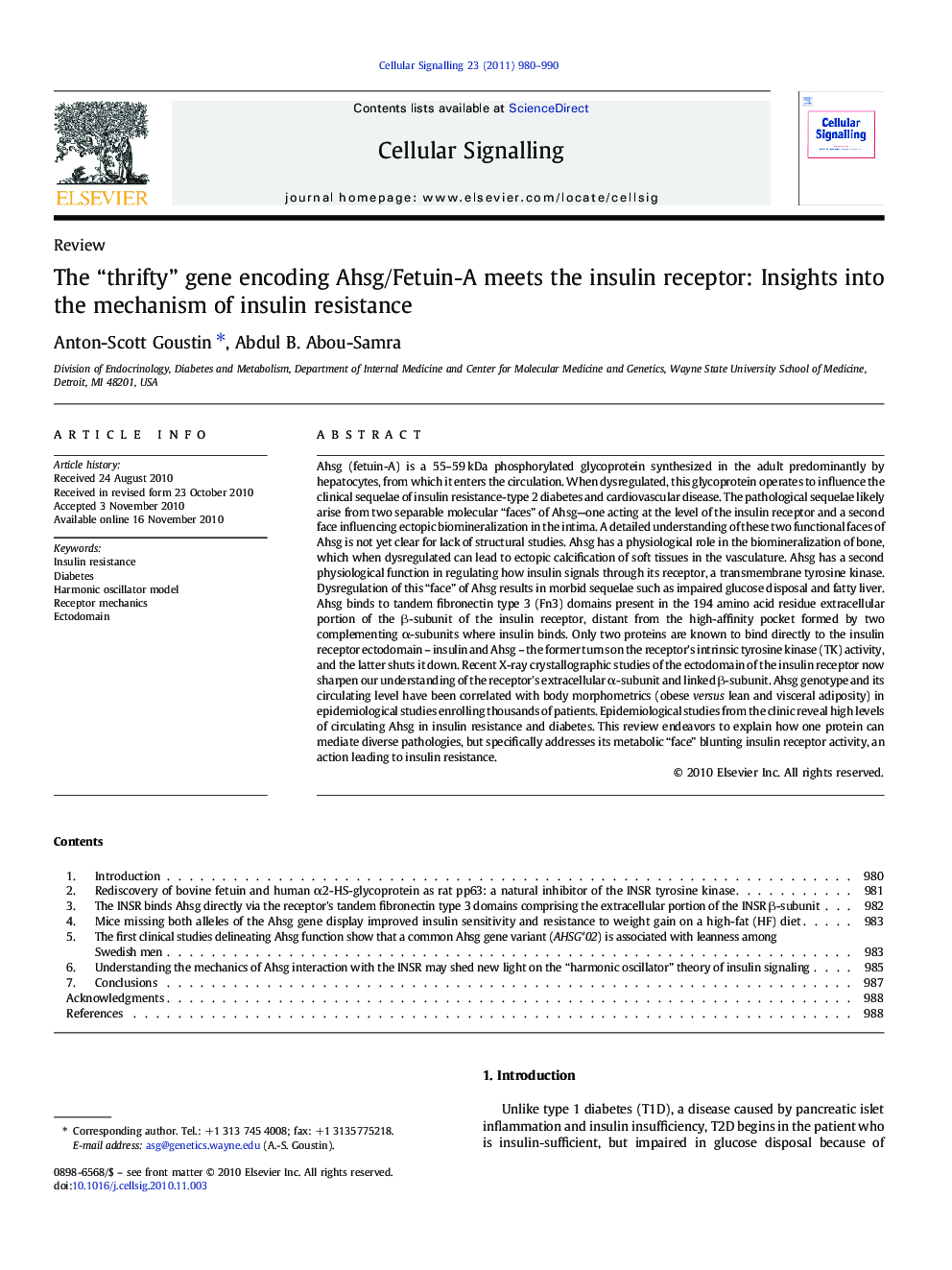| کد مقاله | کد نشریه | سال انتشار | مقاله انگلیسی | نسخه تمام متن |
|---|---|---|---|---|
| 1963726 | 1058494 | 2011 | 11 صفحه PDF | دانلود رایگان |

Ahsg (fetuin-A) is a 55–59 kDa phosphorylated glycoprotein synthesized in the adult predominantly by hepatocytes, from which it enters the circulation. When dysregulated, this glycoprotein operates to influence the clinical sequelae of insulin resistance-type 2 diabetes and cardiovascular disease. The pathological sequelae likely arise from two separable molecular “faces” of Ahsg—one acting at the level of the insulin receptor and a second face influencing ectopic biomineralization in the intima. A detailed understanding of these two functional faces of Ahsg is not yet clear for lack of structural studies. Ahsg has a physiological role in the biomineralization of bone, which when dysregulated can lead to ectopic calcification of soft tissues in the vasculature. Ahsg has a second physiological function in regulating how insulin signals through its receptor, a transmembrane tyrosine kinase. Dysregulation of this “face” of Ahsg results in morbid sequelae such as impaired glucose disposal and fatty liver. Ahsg binds to tandem fibronectin type 3 (Fn3) domains present in the 194 amino acid residue extracellular portion of the β-subunit of the insulin receptor, distant from the high-affinity pocket formed by two complementing α-subunits where insulin binds. Only two proteins are known to bind directly to the insulin receptor ectodomain – insulin and Ahsg – the former turns on the receptor's intrinsic tyrosine kinase (TK) activity, and the latter shuts it down. Recent X-ray crystallographic studies of the ectodomain of the insulin receptor now sharpen our understanding of the receptor's extracellular α-subunit and linked β-subunit. Ahsg genotype and its circulating level have been correlated with body morphometrics (obese versus lean and visceral adiposity) in epidemiological studies enrolling thousands of patients. Epidemiological studies from the clinic reveal high levels of circulating Ahsg in insulin resistance and diabetes. This review endeavors to explain how one protein can mediate diverse pathologies, but specifically addresses its metabolic “face” blunting insulin receptor activity, an action leading to insulin resistance.
Journal: Cellular Signalling - Volume 23, Issue 6, June 2011, Pages 980–990